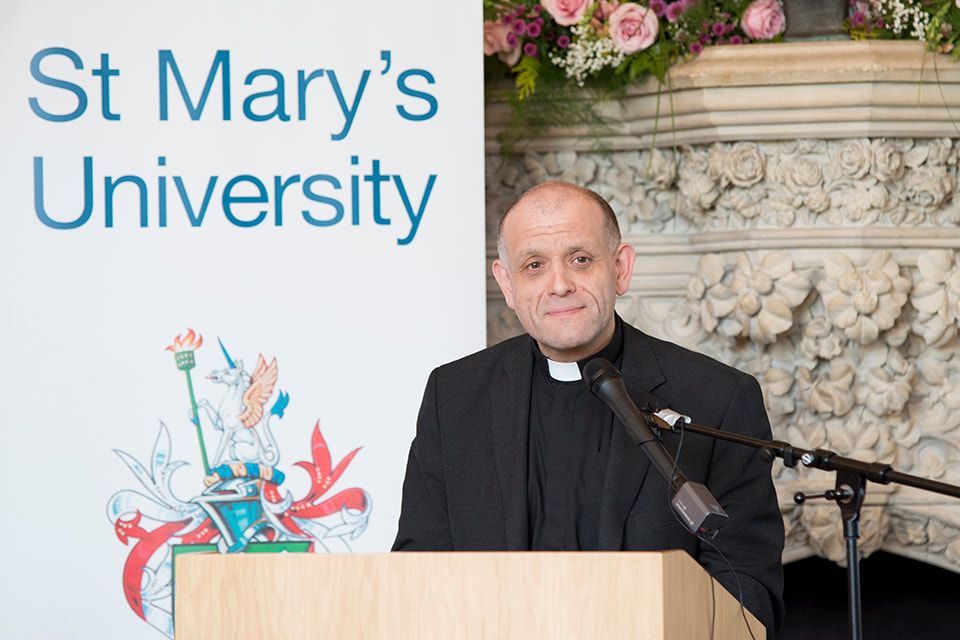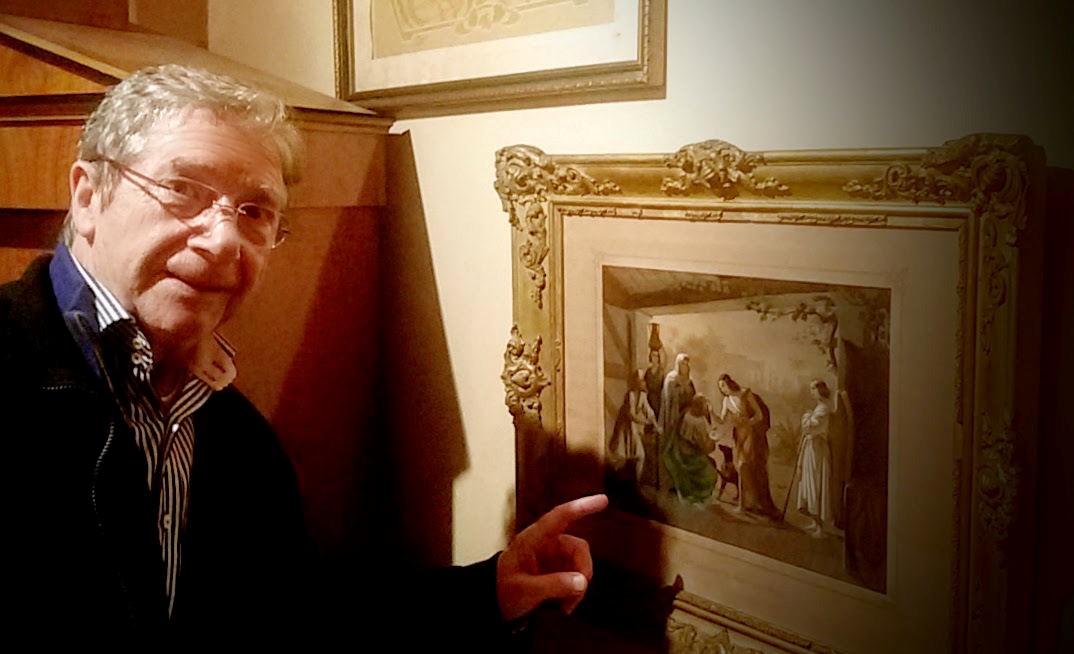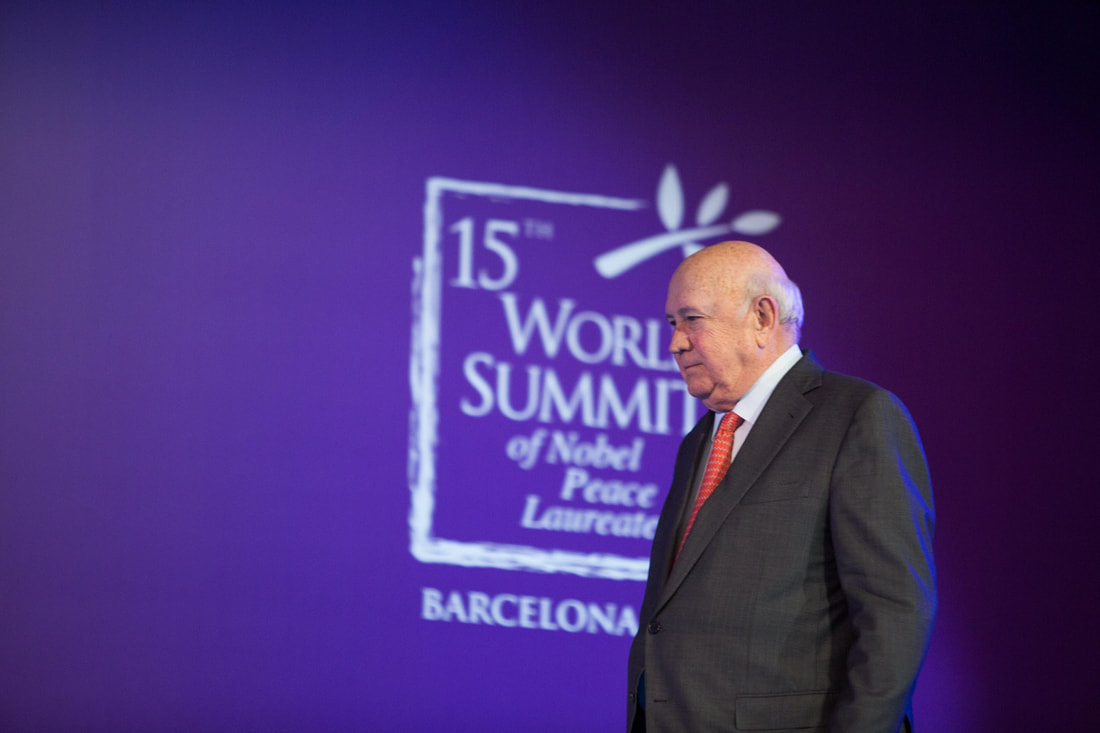|
Take a morning, any morning. Picture it set on a sunny hill in the English countryside. There I stand, in a crescent corner, smartphone in hand, waiting for the taxi I've just ordered. From a little distance, I see a man approaching. He’s a black man, walking slowly toward me, dressed in what seems like a Rocky Balboa-style sweatshirt and bottoms, all dark. The sun is shining bright today.
He looks at me as one does when paths cross in a narrow alley and greets me, "Good morning." "Good morning," I reply. "Are you waiting for God?" he asks, his pace steady, his tone serious. His question catches me off guard—it’s usually me who plays with words like this. Challenged, I respond, "I'm waiting for God and an Uber taxi." "I hope God arrives first!" he declares, without missing a beat. "God has already arrived. He is here with us, all the time," I answer, feeling a surge of faith. "I always hope to be walking with God," he continues, his voice a calm affirmation. "We always walk with Him," I echo. He nods, then adds, "God bless you," as he continues on his way. "God bless you too!" I call out, as he's about ten yards away. Here comes my taxi. The driver, a black man, listens as I recount the encounter. I feel light-hearted; it’s the morning of a Sunday and I’m heading to the Church of St. Joseph and Our Lady. I share the story, smiling. "You black folks," I start, "have a better sense of humor than us whites... And it’s different, whether you come from Africa or you’re an African American living in America." My driver, from Sudan, chuckles. He’s been to Portugal, visited friends there. "I’ve been to Fatima several times," I tell him. We talk about Fatima, the Prophet's daughter, after whom the Portuguese village was named, who married a king in Ourém, Portugal. "And you know," I conclude, "maybe he was an angel. My black angel." "God bless you, have a blessed day," I say to my driver as I leave. "You have a nice day, brother," he replies. Today, I thank God for my black angel. Truly, God is so good! This incident happened recently. I witness to the truth of this account, humble, but meaningful to me. —Jordi NOTA DE PRENSA DE LA REDACCIÓN DE JACQUESPINTOR.COM FECHA DE PUBLICACIÓN: 27 DE FEBRERO DE 2024 El próximo 4 de marzo de marzo de 2024 se llevará a cabo un juicio significativo contra Jordi Picazo, periodista reconocido y miembro del equipo internacional de Jacques Pintor, en el Juzgado de lo Penal número 2 de Huesca, en Sala HU 05, Planta Baja, a las 13.15 horas. Este juicio es parte de un procedimiento secundario, iniciado por los poderes legales del letrado de Vicente Jesús López-Brea Urbán. Picazo, colegiado en el Il·lustre Col·legi de Periodistes de Catalunya y en el Chartered Institute of Journalists de Londres, se enfrenta a acusaciones que desafían los principios fundamentales de la libertad de expresión y el periodismo investigativo. Vicente Jesús López-Brea Urbán, sacerdote en proceso de secularización y actual director gerente de salud pública, está en el centro de la controversia, habiendo generado escándalo en múltiples sectores. Este caso secundario se centra en la supuesta violación de una medida cautelar por parte de Picazo, con la acusación solicitando severas sanciones, en concreto 14.600 € de multa, más 50.000 € de responsabilidad civil, costas procesales y de la acusación particular y 365 días de detención en el caso de no poder hacer frente al pago. DETALLES DEL CASO Y PROCEDIMIENTOS JUDICIALES No obstante, el foco de atención se amplía hacia un procedimiento principal programado para septiembre, que aborda delitos contra el honor, la intimidad y acusaciones de homofobia, derivados de las investigaciones de Picazo sobre las actividades de López-Brea, incluidas sus visitas a clubes liberales de intercambio de sexo homosexual y una supuesta adicción al alcohol. En este juicio principal, se piden dos años de cárcel, 100 mil euros de indemnización y 30 mil euros de multa para Picazo que ya se han intentado retirar de su cuenta bancaria y patrimonio. Además, el exnovio de López-Brea también ha sido demandado, aparentemente basada esta demanda únicamente en la suposición de que podría ser el informante de Picazo, lo que plantea preocupaciones significativas sobre la vulneración de libertades civiles. Estos juicios resaltan no solo las tensiones entre la libertad de prensa y los derechos individuales, sino también las implicaciones más amplias para los derechos civiles y la ética dentro y fuera de la Iglesia Católica. La situación subraya la importancia de la transparencia y la responsabilidad, así como los desafíos que enfrentan los periodistas al informar sobre cuestiones de interés público. Desde Jacquespintor.com, reafirmamos nuestro apoyo inquebrantable a Jordi Picazo y a la libertad de prensa. Estos procedimientos judiciales destacan los riesgos que enfrentan los periodistas y las fuentes en la era moderna y subrayan la necesidad crítica de proteger las libertades periodísticas y civiles. Invitamos a los medios de comunicación y al público a seguir de cerca estos casos y considerar sus profundas implicaciones para la sociedad, la libertad de expresión y la ética institucional. Hay documentos disponibles que pueden compartirse sobre el caso. Contacto de prensa: [email protected] Teléfono habilitado de contacto de Jordi Picazo: +34 670 955 194 REFERENCIAS: Puedes encontrar una referencia sobre este tema en el siguiente enlace al Heraldo de Aragón: Juicio por atentar contra el honor de un sacerdote de Jaca en un blog Puedes encontrar la información sobre el escándalo del nombramiento de López-Brea como director gerente de salud en Guadalajara, abarcando diez centros y el hospital Ernest Lluch, en el siguiente artículo del Heraldo.es: Sanidad coloca a un cura de 30 años como director de gestión del sector de Calatayud. Este acceso estaría prohibido en el Derecho Canónico pero ha sido propiciado por el ex obispo de Huesca-Jaca, Julián Ruiz Martorell. Para más detalles sobre los temas abordados por Jordi Picazo, puedes leer sus artículos en ElNacional.com: "Política, pecado y poder - El ascenso de un sacerdote controversial en la administración pública" aquí, y " Denuncias de promiscuidad sexual del clero español sacuden a la diócesis de Huesca-Jaca" aquí. CLICA AQUÍ PARA LA PÁGINA DE AMAZÓN DEL LIBROTienes en tus manos la 2ª edición corregida y ampliada del libro. En el caso de la ampliación, se ha aplicado en esta edición una reestructuración y distribución de los 19 capítulos en lugar de 15 en la primera edición, en las 8 partes del libro en lugar de 7, en líneas generales. De esta forma, hago también una invitación al lector y a la lectora a enviar testimonios o datos para investigar o ya definitivos, profundizamos en el capítulo 2 en la animadversión de la abogada de Cuatrecasas contra el Opus Dei y en la relación no aclarada entre Omella, Arana y Bergoglio. Lo que está pasando puede parecer un favor de clérigos enemigos del Opus Dei a Cuatrecasas a cambio de su ayuda. ¿Un favor a Cuatrecasas… contra el Opus Dei? En estos enlaces vas al libro, y si quieres puedes comprarlo por 4 €. Jordi Picazo DE LA "NOTA A LA SEGUNDA EDICIÓN", EN EL LIBROAl inicio de los capítulos incluyo una cita de Escrivá de Balaguer sobre la identidad laical del Opus Dei. Esto es lo que ahora pretenden destruir. El documento vaticano del Papa Francisco, el motu proprio «Ad Charisma Tuendum» escrito por el cardenal Ghirlanda es un documento sin lógica, deshonesto intelectualmente. Quiere justificarse con una tesis que destrozan en sus propias conclusiones. En esta 2ª edición hablo también de cómo el Colegio Gaztelueta es pionero en España al introducir la tutoría o preceptuación personalizada en el acompañamiento del alumno en su proceso de maduración y aprendizaje, tomado del modelo anglosajón, especialmente del británico. Los jueces en la Audiencia Provincial de Vizcaya despreciaron por ignorancia este particular, copiado posteriormente en todo el sistema español tras estas décadas, asimilando la preceptuación realizada por el profesor de Gaztelueta a una irresponsabilidad del profesor al sacar al alumno Juan Cuatrecasas Jr. de clase como debe ser, ante sus numerosas faltas de asistencia justificadas por sus padres y después negadas en el juicio, para reforzar su educación en estadios de enseñanza primaria y su paso a la secundaria obligatoria. Esta deficiente valoración por parte de los magistrados de la Audiencia Provincial de Vizcaya fue mencionada por el Tribunal Supremo al rebajar la pena impuesta al ahora ex profesor del colegio de 11 años a dos, junto a otras violaciones de principios básicos del derecho. Refuerzo también en el capítulo 6 la idea de cómo Juan Cuatrecasas sénior comparte un ADN anti Opus Dei con Germán Arana: El Opus Dei, presente transversalmente en la trama maña y la trama contra el colegio Gaztelueta. En la parte tercera del libro describo, como novedad con respecto a la 1ª edición de este libro, del viaje de José Antonio Satué acompañando a Germán Arana tras ser nombrado monseñor Satué presidente de un tribunal ilegal dirigido contra el Opus Dei. Arana fue invitado a México a predicar a sacerdotes de Chalapa. Este viaje de Satué acompañando a Arana fue la contrapartida de la invitación de Satué a Arana a predicar en su diócesis. Qué duda cabe que la invitación por parte de Arana a Satué para que le acompañe es la gran oportunidad de instruir a Satué sobre lo que debe hacer en el proceso contra el Opus Dei en la persona del ex profesor del colegio de Bilbao, Gaztelueta. Tres Semanas enteras para decirle a este obispo de perfil bajo, que ya fue llevado al Vaticano en el año 2015 a que instruyera un proceso ignominioso contra el sacerdote ex secretario del arzobispo emérito de Zaragoza, tras ser este defenestrado. El resultado de esa instrucción sin juicio fue una sentencia para ese sacerdote, con prueba falsa, de procedencia desconocida, sin darle los papeles y sin oírle. Ahora Satué es sacrílegamente utilizado para hacer lo mismo, lo que sabe hacer bien. En el capítulo 11 incluyo mi conversación con otro miembro del tribunal de excepción creado por el cardenal Omella y por su mentor Germán Arana. Hablo del sacerdote de la Diócesis de Jerez-Asidonia, Federico Mantaras, tal vez el más ingenuo de los miembros de ese pseudo tribunal. Pero los ingenuos también son sujetos de obligaciones, y delinquen y pecan, porque tienen libertad. «Iría a la cárcel por Cristo», me dice Mantaras, y le recuerdo que Cristo es la Verdad mientras que él está en un tribunal que promulga mentiras y que viola los Derechos Humanos. «Sudaba y estaba rojo», me comentaba mi acompañante a ese encuentro. Podrás escuchar los audios de esas conversaciones a través de un código QR que ofrezco en esa sección del libro. En la nueva y octava parte del libro muestro algunas reacciones recientes de académicos y juristas, y del mismo profesor condenado por lo civil, quien ha abierto un blog con sus historia: lo que exponen los académicos y juristas en sus comunicados y dictámenes es cuando menos, preocupante por la deriva de la Justicia, la Iglesia Católica, y el periodismo en este caso que parece, cada vez más, que es una payasada y una aberración jurídica. Incluyo un artículo del profesor de Derecho Diego Poole: «La moda de pedir perdón por las supuestas faltas y pecados que cometen otras personas»; un artículo del profesor de derecho constitucional y catedrático de Universidad, Fernando Simón Yarza: «El Papa le dice 'Amén' a Évole con los abusos sexuales«; el artículo «¿Una iglesia bananera?», del escritor y crítico literario Juan Manuel de Prada, y añado una selección de más de cien artículos relevantes a la «Operación Opus Dei», y a su hermana la «Operación Zaragoza» aparecidos en la prensa Española e internacional. Algunos de estos artículos versan sobre Germán Arana en relación con su promoción del obispo ahora encarcelado por delitos de pederastia, Gustavo Zanchetta; sobre el cardenal Omella y el terrorífico caso de pederastia en Barcelona que implicó a tres cardenales y del que Omella oculta las pruebas completas; sobre la imputación del cardenal Omella ante los tribunales civiles; sobre las acusaciones contra el Papa Francisco por su presunta ocultación de casos de pederastia desde sus tiempos de Argentina; sobre el juicio y condena a la ex notaria diocesana Mari Carmen Amador y al ex vicario judicial Roberto Ferrer Sarroca de la archidiócesis de Zaragoza por apropiación indebida de dineros, etc. Asimismo encontrarás unos documentos relevantes que aportan una perspectiva imprescindible para comprender el carácter manipulador de los personajes de esta trama, como la carta de Germán Arana al Papa Francisco (por esta carta se le está juzgando desde el 3 de julio de 2023); unos wasaps entre el cardenal Omella, Roberto Ferrer y Mari Carmen Amador; unos correos electrónicos entre el Rvdo. Roberto Ferrer y el Rvdo. Antonio Más, el hombre olvidado que tramó también contra el ahora arzobispo emérito de Zaragoza y que fue el único condenado por el Vaticano. Encontrarás también los Audios a través de un código QR,
El Autor Lo que sigue ahora son unas palabras que pueden considerarse premonitorias o proféticas, pronunciadas en los últimos tiempos por los dos papas que preceden a Francisco, san Juan Pablo II y Benedicto XVI. De la consideración de estas reflexiones pueden surgir luces para entender los tiempos convulsos que está viviendo hoy la Iglesia católica, a merced de las opiniones secularistas cuando no de sus exigencias, y que confluyen en el ataque despiadado, indisimulado e irracional a la mujer, a la figura del padre y a la familia cristiana. EL CARDENAL KAROL WOJTYLA ANTE EL CONGRESO EUCARÍSTICO DE PENSILVANIA EN 1977, DOS AÑOS ANTES DE SER ELEGIDO PAPA El entonces cardenal Karol Wojtyla pronunció las siguientes palabras ante el Congreso Eucarístico de 1977 en la misma ciudad de Filadelfia: «Estamos ante la confrontación histórica más grande que la humanidad haya tenido. Estamos ante la contienda final entre la Iglesia y la anti-Iglesia, el Evangelio y el anti-Evangelio. Esta confrontación descansa dentro de los planes de la Divina Providencia y es un reto que la Iglesia entera tiene que aceptar».[1] LA PROFÉTICA FIGURA DE JÓZEF RATZINGER En 1969 se encontraba el sacerdote Joseph Ratzinger en una radio alemana respondiendo con sus reflexiones a preguntas sobre el futuro de la iglesia católica. Aquí están sus comentarios finales [el subrayado en negrita es del autor de este libro]: «Con esto hemos llegado a nuestro hoy y a la reflexión sobre el mañana. El futuro de la Iglesia puede venir y vendrá también hoy sólo de la fuerza de quienes tienen raíces profundas y viven de la plenitud pura de su fe. El futuro no vendrá de quienes sólo dan recetas. No vendrá de quienes sólo se adaptan al instante actual. No vendrá de quienes sólo critican a los demás y se toman a sí mismos como medida infalible. »Tampoco vendrá de quienes eligen sólo el camino más cómodo, de quienes evitan la pasión de la fe y declaran falso y superado, tiranía y legalismo, todo lo que es exigente para el ser humano, lo que le causa dolor y le obliga a renunciar a sí mismo. Digámoslo de forma positiva: el futuro de la Iglesia, también en esta ocasión, como siempre, quedará marcado de nuevo con el sello de los santos. Y, por tanto, por seres humanos que perciben más que las frases que son precisamente modernas. Por quienes pueden ver más que los otros, porque su vida abarca espacios más amplios. »La generosidad que libera a las personas se alcanza sólo en la paciencia de las pequeñas renuncias cotidianas a uno mismo. En esta pasión cotidiana, la única que permite al ser humano experimentar de cuántas formas diferentes lo ata su propio yo, en esta pasión cotidiana y sólo en ella, se abre el ser humano poco a poco. Él solamente ve en la medida en que ha vivido y sufrido. Si hoy apenas podemos percibir aún a Dios, se debe a que nos resulta muy fácil evitarnos a nosotros mismos y huir de la profundidad de nuestra existencia, anestesiados por cualquier comodidad. Así, lo más profundo en nosotros sigue sin ser explorado. Si es verdad que sólo se ve bien con el corazón, ¡qué ciegos estamos todos! »¿Qué significa esto para nuestra pregunta? Significa que las grandes palabras de quienes nos profetizan una Iglesia sin Dios y sin fe son palabras vanas. No necesitamos una Iglesia que celebre el culto de la acción en oraciones políticas. Es completamente superflua y por eso desaparecerá por sí misma. Permanecerá la Iglesia de Jesucristo, la Iglesia que cree en el Dios que se ha hecho ser humano y que nos promete la vida más allá de la muerte. »De la misma manera, el sacerdote que sólo sea un funcionario social puede ser reemplazado por psicoterapeutas y otros especialistas. Pero seguirá siendo aún necesario el sacerdote que no es especialista, que no se queda al margen cuando aconseja en el ejercicio de su ministerio, sino que en nombre de Dios se pone a disposición de los demás y se entrega a ellos en sus tristezas, sus alegrías, su esperanza y su angustia. »Demos un paso más. También en esta ocasión, de la crisis de hoy surgirá mañana una Iglesia que habrá perdido mucho. Se hará pequeña, tendrá que empezar todo desde el principio. Ya no podrá llenar muchos de los edificios construidos en una coyuntura más favorable. Perderá adeptos, y con ellos muchos de sus privilegios en la sociedad. Se presentará, de un modo mucho más intenso que hasta ahora, como la comunidad de la libre voluntad, a la que sólo se puede acceder a través de una decisión. Como pequeña comunidad, reclamará con mucha más fuerza la iniciativa de cada uno de sus miembros. »Ciertamente conocerá también nuevas formas ministeriales y ordenará sacerdotes a cristianos probados que sigan ejerciendo su profesión: en muchas comunidades más pequeñas y en grupos sociales homogéneos la pastoral se ejercerá normalmente de este modo. Junto a estas formas seguirá siendo indispensable el sacerdote dedicado por entero al ejercicio del ministerio como hasta ahora. Pero en estos cambios que se pueden suponer, la Iglesia encontrará de nuevo y con toda la determinación lo que es esencial para ella, lo que siempre ha sido su centro: la fe en el Dios trinitario, en Jesucristo, el Hijo de Dios hecho hombre, la ayuda del Espíritu que durará hasta el .fin. La Iglesia reconocerá de nuevo en la fe y en la oración su verdadero centro y experimentará nuevamente los sacramentos como celebración y no como un problema de estructura litúrgica. »Será una Iglesia interiorizada, que no suspira por su mandato político y no flirtea con la izquierda ni con la derecha. Le resultará muy difícil. En efecto, el proceso de la cristalización y la clarificación le costará también muchas fuerzas preciosas. La hará pobre, la convertirá en una Iglesia de los pequeños. El proceso resultará aún más difícil porque habrá que eliminar tanto la estrechez de miras sectaria como la voluntariedad envalentonada. Se puede prever que todo esto requerirá tiempo. »El proceso será largo y laborioso, al igual que también fue muy largo el camino que llevó de los falsos progresismos, en vísperas de la revolución francesa –cuando también entre los obispos estaba de moda ridiculizar los dogmas y tal vez incluso dar a entender que ni siquiera la existencia de Dios era en modo alguno segura–, hasta la renovación del siglo XIX. »Pero tras la prueba de estas divisiones surgirá, de una Iglesia interiorizada y simplificada, una gran fuerza, porque los seres humanos serán indeciblemente solitarios en un mundo plenamente planificado. Experimentarán, cuando Dios haya desaparecido totalmente para ellos, su absoluta y horrible pobreza. Y entonces descubrirán la pequeña comunidad de los creyentes como algo totalmente nuevo. Como una esperanza importante para ellos, como una respuesta que siempre han buscado a tientas. »A mí me parece seguro que a la Iglesia le aguardan tiempos muy difíciles. Su verdadera crisis apenas ha comenzado todavía. Hay que contar con fuertes sacudidas. Pero yo estoy también totalmente seguro de lo que permanecerá al final: no la Iglesia del culto político, ya exánime, sino la Iglesia de la fe. Ciertamente ya no será nunca más la fuerza dominante en la sociedad en la medida en que lo era hasta hace poco tiempo. Pero florecerá de nuevo y se hará visible a los seres humanos como la patria que les da vida y esperanza más allá de la muerte. »La Iglesia católica sobrevivirá a pesar de los hombres y las mujeres, no necesariamente gracias a ellos. Y, aun así, todavía nos queda trabajo por hacer. Debemos rezar y cultivar el autosacrificio, la generosidad, la lealtad, la devoción sacramental y una vida centrada en Cristo».[2] [1] Cardenal Karol Wojtyla. Discurso durante el Congreso Eucarístico en Filadelfia, en 1977 [2] «Cuando el sacerdote Joseph Ratzinger predijo el futuro de la Iglesia»; artículo en portal en Internet Aleteia Puedes leer más en mi libro recién publicado, primer libro en el mundo sobre el año de la familia Amoris laetitia, disponible en Amazon a precio popular. Accedes a Amazon haciendo clic en este enlace, aquí.
Aquí te presento la Introducción de mi libro dedicado a la epopeya de César Viveros, mexicano que vive en la ciudad norteamericana de Filadelfia, y que ganó el concurso para pintar el gigantesco mural para el Papa Francisco en su ida a esa ciudad en 2015. Lee, y disfrútalo. Más abajo enlazo el libro, en Amazon. Puedes leer más en mi libro recién publicado, primer libro en el mundo sobre el año de la familia Amoris laetitia, disponible en Amazon a precio popular. Accedes a Amazon haciendo clic en este enlace, aquí. Llámame Jordi. Y te contaba más arriba, amiga, amigo, que César Viveros fue recientemente tocado por la desgracia de la muerte de su esposa Ana Guissel en 2018; no pocas veces, de la mano de la Fe con raíces se convierten las desgracias en bendición, aun cuando uno ve cómo el camino que se le presentaba recto y previsible de repente explota a sus pies y se ve lanzado por los aires en mil pedazos. Esos pedazos César sintió la obligación de recogerlos con el alma desgarrada porque tiene dos hijos que cuelgan de él, Ana Isabel y Maximiliano. Y esos hijos se convierten de repente por designio del destino en tabla de salvación y en compañeros de camino para ir descubriendo qué hay detrás de esa cortina que se ha cernido sobre su escenario cuando el acto no había concluido todavía. Tu amada esposa, César, de repente deja este mundo por culpa de una enfermedad. Ese cáncer que arrebata a la familia Viveros la estrella de su firmamento no os arrebata sin embargo su presencia, y esa presencia hace que sigáis adelante, como ella hacía contigo: a base de crear arte con la Fe de vuestro corazón mexicano. La misma Fe y Esperanza que te llevó, hermano, del polvo de los caminos de Veracruz hasta el océano sobre los que trabajaste montado en una plataforma petrolífera en trabajos de reparación y en los que te sumergiste en tareas de buceo y pasabas los días de tormenta pintando para tus compañeros retratos de sus novias con pintura industrial. Y luego la siguiente estación fue Filadelfia, la ciudad santuario, la ciudad del “amor de hermano y el cariño de hermana”, “the city of fraternal love and sisterly affection”. En este libro explico en boca y desde el corazón de César --ex abundantia cordis, os loquitur (los labios hablan desde la abundancia del corazón)— la historia de este Mural. porque es un Mural que tiene una historia. Un mural que tiene, mejor, historias, y que luego desemboca todavía en más historias. La historia principal es la historia del Mural de los Malaquías en una época de cambios, o mejor, como dice nuestro amado papa Francisco en un «cambio de época» donde no todo —o casi nada, diría yo, como se verá— es lo que parece. Mis conversaciones con César han sido transcritas de manera que reflejan el lenguaje oral vivo que utilizaba César conmigo, para preservar su ritmo y emoción, su genuinidad. Todos los diálogos han sido conversados, escuchados, en persona en 2015 y 2016 y por videoconferencia o teléfono del 2017 al 2020 y hasta el día de hoy. En este libro revisito la profecía de san Malaquías, el santo proclamado por la Iglesia católica que predijo los 44 últimos papas. A Francisco le toca ser el último de los papas en la lista de san Malaquías. El último en una Iglesia que ya no será más la que hemos conocido, como explica Benedicto XVI y como muestro más adelante. Alrededor de la profecía de Malaquías se ha prodigado también mucha tinta y cálamo. Este libro muestra el encuentro de Malaquías con Francisco en la ciudad de Filadelfia, cuna de la nación de los Estados Unidos de Norteamérica. Lo cierto es que el papa Francisco pasó por los USA y se volvió a Roma. Pero algo en Filadelfia queda de ese viaje que resuena como eco incesante y se remonta a siglos en la historia. Es tan sencillo de explicar como a la vez sorprendente. Para ello haremos referencia al santo irlandés que predijo el número de papas “hasta que el papado dejase de ser lo que hasta ese último papa habría representado”. Y te lo cuenta, querido lector, querida lectora, César el emigrante mexicano en Filadelfia y Jordi. Nací en la ciudad de Mataró en Barcelona, España, donde también vivió su infancia, estudió, y murió tras su regreso de Argentina —y esa fue mi presentación al papa Francisco al mostrarle en febrero de 2016 en el Vaticano la fotografía de su firma sobre el mural— Blas Parera, compositor del himno de la nación argentina, y Juan Larrea, miembro del primer triunvirato de la nación libre de Argentina. Tras esa introducción y pidiéndole permiso, nos fundimos en un largo abrazo. Este libro acaba un poco súbitamente. Tendrá su continuación. Situados en este punto al final del libro en Dublín, en el Encuentro Mundial de las Familias de 2018, acabaremos de analizar la ruta que se trazó para demoler la antropología humana de la familia según la Tradición de la Iglesia católica. Retomaremos estos acontecimientos desde Dublín, para analizar el camino que lleva a Roma para el Encuentro de 2022. Quédate conmigo, te decía, que yo te cuento. «NO ESTAMOS EN UNA ÉPOCA DE CAMBIOS SINO EN UN CAMBIO DE ÉPOCA» Papa Francisco «¡BIENVENIDO, SANTO PADRE!» El arzobispo Charles Chaput de Filadelfia —de quien tomó el listón Monseñor Nelson Pérez desde su toma de posesión el 18 de febrero de 2020— dirigió el siguiente saludó al papa Francisco en el Festival de las Familias en Filadelfia tras la presentación del mural al papa Francisco por parte de César Viveros: «Thank you, Holy Father. This mural will be a lasting testament to the World Meeting of Families and your visit. From all of us here tonight, we thank you and we say together God bless Pope Francis». [Gracias Santo Padre. Este mural será un testamento duradero para el Encuentro Mundial de las Familias y su visita. De todos nosotros aquí esta noche, le agradecemos y decimos juntos «Dios bendiga al papa Francisco»]. Francisco desde el inicio de su pontificado habla de que no estamos en una época de cambios, sino en un cambio de época: «No estamos viviendo simplemente una época de cambios, sino en un cambio de época… un “cambio de mentalidad pastoral”. No una “pastoral relativista”, sino que se trata, en línea con la “nueva evangelización” de Juan Pablo II, o de la creación en 2010 por Benedicto XVI del Pontificio Consejo para la Promoción de la Nueva Evangelización, de asumir un cambio de época. (…) Es necesaria una nueva evangelización, o reevangelización». EL FINAL DE UN PONTIFICADO… Escribía en mi libro, Por último, en esta breve lista podemos ser testigos en este año 2021 del fin próximo de los días de un papa que ha sido un profeta, Benedicto XVI. Todo parece a punto para que, si Benedicto XVI abandona esta vida terrena por la Casa del Padre, Jorge Bergoglio, nuestro amado Francisco I, presente su renuncia como él mismo ha mencionado que no descarta hacer llegado el momento adecuado. Aunque, como apuntan algunos, pudiera ser que el destino, la Providencia nos hubiera preparado ver a Benedicto XVI enterrar a Francisco. El mismo biógrafo del papa, Austen Ivereigh, había recordado a la opinión pública mundial que no había ninguna duda que Francisco dimitiría el año 2020, puesto que así lo había anunciado él mismo[2]. PAPA FRANCISCO, FELICITACIÓN NAVIDEÑA A LA CURIA VATICANA, 2019 En la entrevista que me concedió Austen Ivereigh, biógrafo de Francisco, para el Portal Forum Libertas y que publiqué el 7 de diciembre de 2015 —solo 30 días después de la visita de Francisco a Estados Unidos de Norteamérica—, me manifestaba que «el cambio cultural lleva tiempo, pero mi predicción es que la reforma de Francisco, la conversión que traerá será un cambio permanente qué será continuado por sus sucesores porque responde de hecho a lo que Francisco dice: “esta no es una época de cambios, sino un cambio de época”. Y con esa permanencia vamos a ver con el tiempo, y ya en perspectiva, la gran significancia de este papado, que está implementando plenamente a base de estos cambios lo propuesto ya en el Concilio Vaticano II. No hay duda de que Francisco prefiere equivocarse por demasiada misericordia que por demasiado rigor». SIGNOS VISIBLES DEL CAMBIO DE ÉPOCA EN EL MUNDO En este «cambio de época» en pleno siglo XXI que describe Francisco estamos viviendo varios episodios que marcan la historia de la humanidad, aunque con distintos grados de impacto. En primer lugar, y marca un pequeño punto de fuga con respecto al acontecimiento de la visita a Filadelfia de Francisco, la reciente aceptación por parte del papa de la renuncia por edad del arzobispo Charles Chaput de Filadelfia. Monseñor Charles Chaput fue el arzobispo que le recibió como anfitrión del Encuentro y presentó la efeméride al mundo desde el estrado de la gran fiesta de las Familias el último día del Encuentro Mundial de las Familias 2015. Así, el 18 de febrero de 2020 monseñor Nelson J. Pérez inauguró su mandato como nuevo arzobispo nombrado por el papa Francisco y llamado a suceder a Monseñor Charles Chaput. En segundo lugar, el fenómeno conocido como Brexit (Britain-Exit) o salida de Reino Unido de la Unión Europea, vigente desde 1 de enero de 2021. No deja este de ser un acontecimiento trágico por lo que había representado la fundación de la Comunidad Económica Europea para la esperanza de que no se repitiera la tragedia que supuso la Segunda Guerra Mundial. El hecho de que no se haya implementado plenamente el Brexit en estos años desde su comunicación a la UE por parte del Gobierno de Reino Unido en marzo de 2017 y hasta el 1 de febrero de 2020 representa en cierto modo una profecía de deconstrucción más que de esperanza. Curioso Encuentro también el de Filadelfia contemplado desde esta perspectiva si consideramos que en Filadelfia brotó la Independencia Americana de Estados Unidos de Norteamérica respecto a los ingleses un 4 de julio de 1776, su particular AMEXIT (America-Exit) si se me permite el paralelismo. En tercer lugar y solo recientemente, el 29 de abril de 2020 —festividad de santa Catalina de Siena, patrona de Europa— el papa Francisco ha clamado por una Europa unida en sintonía con el clamor de san Juan Pablo II para que Europa volviese a sus raíces cristianas. El papa Francisco ya había clamado anteriormente por esa unidad profética de Europa a principios de junio de 2019, también con anterioridad a principios de julio de 2016, y más recientemente todavía el 10 de mayo de 2020, con ocasión del 75 aniversario del VE-Day o día de la Victoria en Europa sobre el satánico ejército del Tercer Reich nacional - socialista alemán acaecida dos fechas antes en el año 1945, un 8 de mayo. En cuarto lugar y en otro orden de cosas, el azote de una crisis sanitaria global por el llamado virus COVID19 que ha afectado a toda la familia humana durante la casi totalidad del año 2020, y todavía no ha sido controlado en pleno año 2021. Anteriormente aún, la firma del «documento de la fraternidad en Abu Dabi» el 4 de febrero de 2019 en que se hace oficiosa una herejía por mor de un bien mayor si eso es justificable, que no lo es. No se sabe si por defecto y culpa del servicio de traducciones del Vaticano al pasar de una lengua a otra una frase original desconocida pero que da como resultado que Dios “quiere” la diversidad de religiones, cuando ello es contrario a la Tradición de la Iglesia Católica. Reflexioné sobre esto en un artículo. Propuse en ese artículo en el Portal de Internet International Family News[1] que esta crisis creada por la equiparación de las religiones por parte del Vaticano, al menos en apariencia, podría ser debida a la poca calidad de los servicios de traducción del mismo Estado Vaticano. En séptimo lugar y en la misma línea de «acuerdos», fuimos testigos inertes durante el año 2019 de la firma de un acuerdo-pacto cuyos términos siguen manteniéndose en secreto por las partes, entre el Vaticano y la República Popular comunista de China, que está causando antes que motivos de esperanza, una trágica escalada de abusos por parte de las autoridades del régimen totalitario chino sobre las religiones y en especial —justo lo que se pretendía frenar— sobre el cristianismo y más insidiosamente sobre los católicos de ese macro país. Y en la posición número ocho de esta lista de acontecimientos que están impactando a la humanidad en esta época de cambios en pleno siglo XXI, vivimos también un momento caliente en la confusión sobre la identidad del sacerdocio ministerial, y somos testigos de las discusiones sobre si es más un ministerio social o un testimonio de la esponsalidad de Cristo con su Iglesia; vemos cómo se minusvalora, cuando no se ataca, el celibato de los sacerdotes en el rito de la Iglesia latina contemporáneamente con la publicación en marzo de 2020 tras el Sínodo sobre la Amazonía de la exhortación apostólica del papa Francisco «Querida Amazonia». Las expectativas de algunos sectores para con la publicación del documento final de esta exhortación apostólica rebelaban un deseo diluir la dimensión ministerial del sacerdocio católico asimilándola a la dimensión universal del sacerdocio común que tienen por el bautismo todos los cristianos, introduciendo la propuesta de instaurar la elección de presbíteros por parte de la comunidad a votación popular, y la posibilidad de la ordenación de mujeres y chamanes para que fueran erigidos presbíteros católicos. Esto finalmente no ocurrió, al menos oficialmente. [1] «El flirteo Abu Dabi-Vaticano o los traductores vaticanos ayunos de teología». Artículo de Jordi Picazo, 5 de marzo de 2021. En ifamnews.com/es [2] «El papa francisco podría dimitir después de las fiestas navideñas». Artículo de 22 de diciembre de 2020 en https://centranews.com.gt/ [3] Cfr. Bula de convocación del jubileo extraordinario de la misericordia «VULTUS MISERICORDIAE», en Vatican.va -¿Va a cambiarlo todo, como temen los conservadores, o lo va a dejar todo como está, como temen los progresistas? -Bergoglio recibió una gran influencia del libro de Yves Congar de 1950 Verdadera y falsa reforma en la Iglesia, que San Juan XXIII tenía como libro de cabecera en su mesita de noche cuando convocó el Vaticano II. Congar muestra cómo en el pasado la reforma católica auténtica en la Iglesia católica siempre ha tenido lugar en consonancia con la tradición de la Iglesia, no cuestionando las doctrinas católicas fundamentales. El Papa no va a cambiar la doctrina. Puedes leer aquí la entrevista que le hice antes de la presentación: EL ROSTRO DE DIOS ES MISERICORDIA. MI ENTREVISTA AL BIÓGRAFO DEL PAPA FRANCISCO
Así, el autor de “El Gran Reformador. Francisco, retrato de un papa radical” subrayaba durante nuestra entrevista en Barcelona, España tres meses después de que coincidiéramos en el Encuentro Mundial de las Familias en Filadelfia, que la primera caracterización de Francisco en el título de su libro «suena a Lutero» y la segunda «puede sonar a Che Guevara». También aseguraba que «El papa no ha cambiado ni aguado ningún aspecto de la doctrina católica». John Allen Jr. —destacado vaticanista estadounidense y director del portal católico Crux— calificaba esta biografía de «indispensable y absorbente». Rigurosa- mente documentada, se hace difícil dejar su lectura una vez te has embarcado en ella, comentaba. Ivereigh y el que te habla, querida lectora, querido amigo lector, coincidimos en la Convención Anual de la RNA en Filadelfia ese septiembre de 2015, y tuvimos ocasión de charlar de nuevo en Barcelona cuando le entrevisté tres meses después del final del Encuentro Mundial de las Familias, un 1 de diciembre de 2015. «Aquellos que experimentan la misericordia, experimentan a Dios mismo» JORDI PICAZO: —¿Austen, puedes ampliar esa afirmación tuya de que la misericordia es la clave del papado de Bergoglio? AUSTEN IVEREIGH: —La misericordia en Francisco es un tema clave que está presente desde el principio de su vida personal. Es importante aquí recordar una experiencia tumbativa de misericordia poco antes de los 17 años en el confesionario, y que él mismo describió más tarde como igual que haber sido tirado del caballo. Personalmente creo que siempre ha estado convencido de que aquellos que experimentan la misericordia experimentan a Dios mismo; porque la misericordia es la primera manifestación para aquellos que son incondicionalmente perdonados. Son estos los que experimentan a Dios y por tanto se ven convertidos. La misericordia es absolutamente crucial en la evangelización tal como la ve el papa. En otras palabras, la Iglesia tiene que orientarse hacia demostrar y ofrecer esa misericordia de Dios en todas y cada una de las cosas que hace. Es así como va a tener credibilidad. Este es un punto capital en la bula “Vultus Misericordiae”, con ocasión del anuncio del Jubileo de la Misericordia que comienza en una semana [por diciembre de 2015]. En la Bula el papa utiliza la palabra credibilidad cuatro veces. Y eso es muy interesante. La Iglesia solo es creíble cuando es misericordiosa. Y, ¿por qué dice eso el papa? Pues porque mucha gente tiene, aunque sólo sea inconscientemente, conocimiento de Dios; y la sociedad occidental está informada por el cristianismo y subconscientemente reconocemos que Dios es misericordioso. Así, cuando la Iglesia aparece como juzgadora, la rechazamos, por mucha verdad que proclame; mientras que cuando la gente percibe la misericordia, se ve desbordada y atraída. «Cuando la Iglesia aparece como juzgadora, la rechazamos, por mucha verdad que proclame; cuando la gente percibe la misericordia, se ve desbordada y atraída» -AUSTEN IVEREIGH JP: —Entonces la Nueva Evangelización consiste en re-proponer la Evangelización con nuevas maneras, no tanto volver al principio porque haya fracasado la primera. AI: —El concepto de Nueva Evangelización surgió ante la crisis de valores del continente europeo, y fue propuesta por el papa Juan Pablo II. Fue más tarde implementado por el papa Benedicto XVI, que creó el Pontificio Consejo para la Promoción de la Nueva Evangelización y convocó un Sínodo sobre este tema. La cuestión es crear nuevas maneras dinámicas y energías para llevar a cabo esta Nueva Evangelización. Recuerdo muy bien el Sínodo sobre la Nueva Evangelización del año 2012. Hubo mucha charla acerca de la apologética y pienso que el problema desde el punto de vista de Latinoamérica —desde donde Jorge Bergoglio lo veía todo en Buenos Aires— era que todo ello de alguna manera simplemente reforzaba la laguna entre la Iglesia y la gente. Cuanto más la Iglesia enfatiza su verdad tanto menos se la escucha, a menos que acompañe esa proclamación con acciones de misericordia a la vez que de un mensaje de humildad. Y por ello pienso que ahora es cuando la Nueva Evangelización está empezando a llevarse a cabo eficazmente, bajo el pontificado de Francisco y su idea de misericordia. Cuando decimos que Dios es misericordioso estamos diciendo que Dios tiene un corazón para el pobre. JP: —¿Misericordia sin arrepentimiento? La Biblia dice «pero si hubierais sabido lo que esto significa: ‘Misericordia quiero y no sacrificio’, no hubierais condenado a los inocentes (Mt 12:7 -Traducción en LBLA, La Biblia de las Américas)». ¿No sugiere esto la necesidad de la conversión? El arzobispo de Filadelfia, Charles Chaput, ha prevenido del peligro de una misericordia de rebajas; o el mismo teólogo converso al catolicismo Scott Hahn, en Filadelfia, en el marco del Encuentro Mundial de las Familias, comentaba en su charla ante 3.000 asistentes de diversas de- nominaciones que lo aclamaron al unísono con estruendoso aplauso: «misericordia no va de perdón, misericordia va de arrepentimiento». AI: —La palabra latina misericordia consta de dos partes: Cor —corazón— y miseri —los pobres. Estamos hablando de los pobres, de los pobres en el sentido amplio y no solamente los pobres materiales: cualquiera que busca, que anhela; pobre en el sentido de las Bienaventuranzas, el que anhela, sufre. Por tanto, cuando decimos que Dios es misericordioso estamos diciendo que Dios tiene un corazón para el pobre. Cuando buscas a Dios lo acabas encontrando. Pero la misericordia no es barata, no. Cualquier contacto con Dios requiere y conduce a la conversión. Y Bergoglio cuando era obispo insistía en que la gente que realmente se topa con esa misericordia de Dios no puede ya más separarse de la ley. Les cambia esa misericordia. Entiende así que la estrategia de evangelización de la Iglesia tiene que fundarse en ofrecer la misericordia completa, y de manera práctica, concreta, inmediata y accesible a la gente. «El Papa no ha cambiado ni aguado ningún aspecto de la doctrina católica» JP: —¿Trata Francisco de vapulear todas las con- ciencias con frases cortantes y rompedoras? ¿Es consciente de que no pocas veces confunde a más de uno? El reciente encuentro con los luteranos resaltaba la soberanía de la conciencia, respondiendo a la pregunta de una mujer luterana, esposa de un católico, sobre su deseo de comulgar junto a su marido. Con esos consejos de seguir la conciencia tras llevar ese dilema a la oración, ¿trata el papa de prevenir a los conservadores de una posible tentación de idolatrar la ley? O, cuando algunos interpretan la potestad concedida a los sacerdotes —y no solamente a los obispos— durante el año de la misericordia de perdonar el pecado del aborto, se interpreta por parte de algunos que ha dejado de ser pecado… ¿Podríamos hablar de algún trastorno común en el papa —como todos tenemos alguno, sea narcisismo, trastorno hipocondriaco—, convierte en doctrina de la Iglesia sus opiniones? ¿O es simplemente rompedor como Jesucristo? AI. —No sé si confunde a la gente. Sí sé que hay gente que se siente confundida en ocasiones por las frases del papa Francisco, pero no me he topado con nadie que no sepa en qué lado se encuentra el papa, y he constatado además que el papa no ha cambiado ni aguado ningún aspecto de la doctrina católica. Francisco hace una y otra vez lo mismo que Jesucristo, transmitir la ley de Dios manifiesta en las enseñanzas de la Iglesia proporcionándole la más plena comprensión y entendimiento. En el ejemplo que mencionas de san Juan en su Evangelio con la mujer adúltera, Jesús le dice «vete y no peques más». Él la ve como una pecadora, está claro, pero no solamente como una pecadora. La ve también como una víctima que necesita ser curada. Y este es el punto central: si dejamos fuera la misericordia nos quedamos solo con el juicio duro y eso no es de Dios. Si queremos comunicar a Dios, entonces debemos comunicar su Misericordia[1] (Vultus Misericordiae, descargar aquí en pdf). «Francisco es misionero, y los misioneros no van en busca de la gente para leerles encíclicas: empiezan con el kerigma» JP: —¿Por qué lleva solo una frase del papa —como la de «¿quién soy yo para juzgar a una persona gay que busca a Dios en su corazón?»— para provocar el caos, cuando Francisco no deja de recalcar la santidad del matrimonio, y que este es entre un hombre y una mujer? AI: —No hay contradicción, realmente, para el amor de Dios. Estas personas, gay o transgénero, han experimentado tradicionalmente una dosis de rechazo dentro del seno de la Iglesia, lo que les convierte de alguna forma en ciudadanos de segunda clase. Eso es lo que el papa Francisco quiere decir cuando habla de la proclamación primera de la misericordia. A veces nos obsesionamos con las cosas que repetimos una y otra vez y lo que repite una y otra vez el papa es lo que la gente necesita: esa es puramente la manera de pensar de un misionero, y Francisco es misionero. Y los misioneros no van en busca de la gente para leerles encíclicas: empiezan con el kerigma y eso es lo que Francisco intenta priorizar. Así, en cierta manera, si refuerzas constantemente la proclamación de la verdad, podrás hacer eso el tiempo que quieras, pero no te oirán, y no vas a transformar a nadie. Mucha gente, como puedes imaginarte tras leer la biografía, me dice —ey, me gusta el papa Francisco, pero no me gusta la Iglesia católica. Y yo les digo: —¡y por qué eso!—, y te dan casi siempre un ejemplo de algo que ha dicho o de algo que ha hecho Francisco; y resulta que eso refleja obras de misericordia, como por ejemplo que el papa permita que las mujeres den el pecho en la Capilla Sixtina, o su momento cuando abraza al hombre con las grandes llagas y deformaciones en la Plaza de san Pedro. Y estas cosas que nos cuentan estas personas son historias a través de las cuales reconocen lo que ya han conocido anteriormente, el amor de Dios. «No hay duda de que Francisco prefiere equivocarse por demasiada misericordia que por demasiado rigor» JP: —¿Se va viendo el efecto positivo y transformador de esta misericordia del papa? AI: —El “Efecto Francisco” no podemos discernirlo todavía, es demasiado temprano. Vemos que mucha gente vuelve a la Iglesia, y que hay una nueva disposición en la gente de mirar de nuevo a la Iglesia. Si eso se traduce en con- versiones o no, va a depender de la influencia de ese cambio cultural que conlleva esa actividad misionera de la Nueva Evangelización. El cambio cultural lleva tiempo, pero mi predicción es que la reforma de Francisco, la conversión que traerá será un cambio permanente qué será continuado por sus sucesores porque responde de hecho a lo que Francisco dice: «esta no es una época de cambios, sino un cambio de época». Y con esa permanencia vamos a ver con el tiempo —y ya en perspectiva— la gran significancia de este papado, que está implementando plenamente a base de estos cambios lo propuesto ya en el Concilio Vaticano II. No hay duda de que Francisco prefiere equivocarse por demasiada misericordia que por demasiado rigor. [1] Cfr. Bula de convocación del jubileo extraordinario de la misericordia «VULTUS MISERICORDIAE», en Vatican.va |
ACTUALIDAD SOBRE LA DISPUTA DE TORRECIUDAD
ENTRADAS MÁS LEÍDAS ESTA SEMANA
CATEGORÍAS
Todo
|
|
ALGUNOS PUNTOS DESDE DONDE NOS LEEN
|


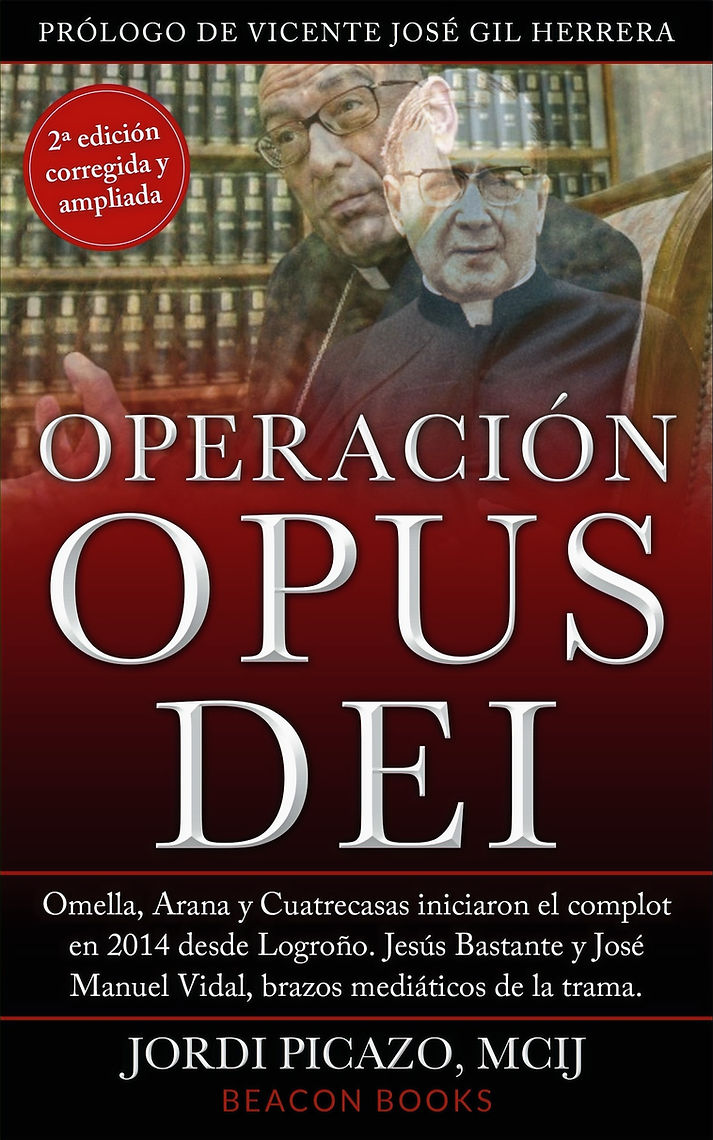
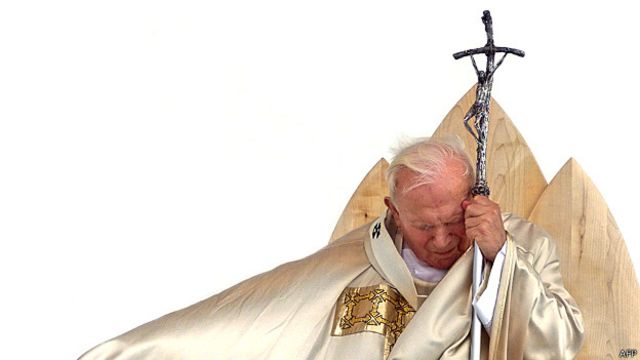
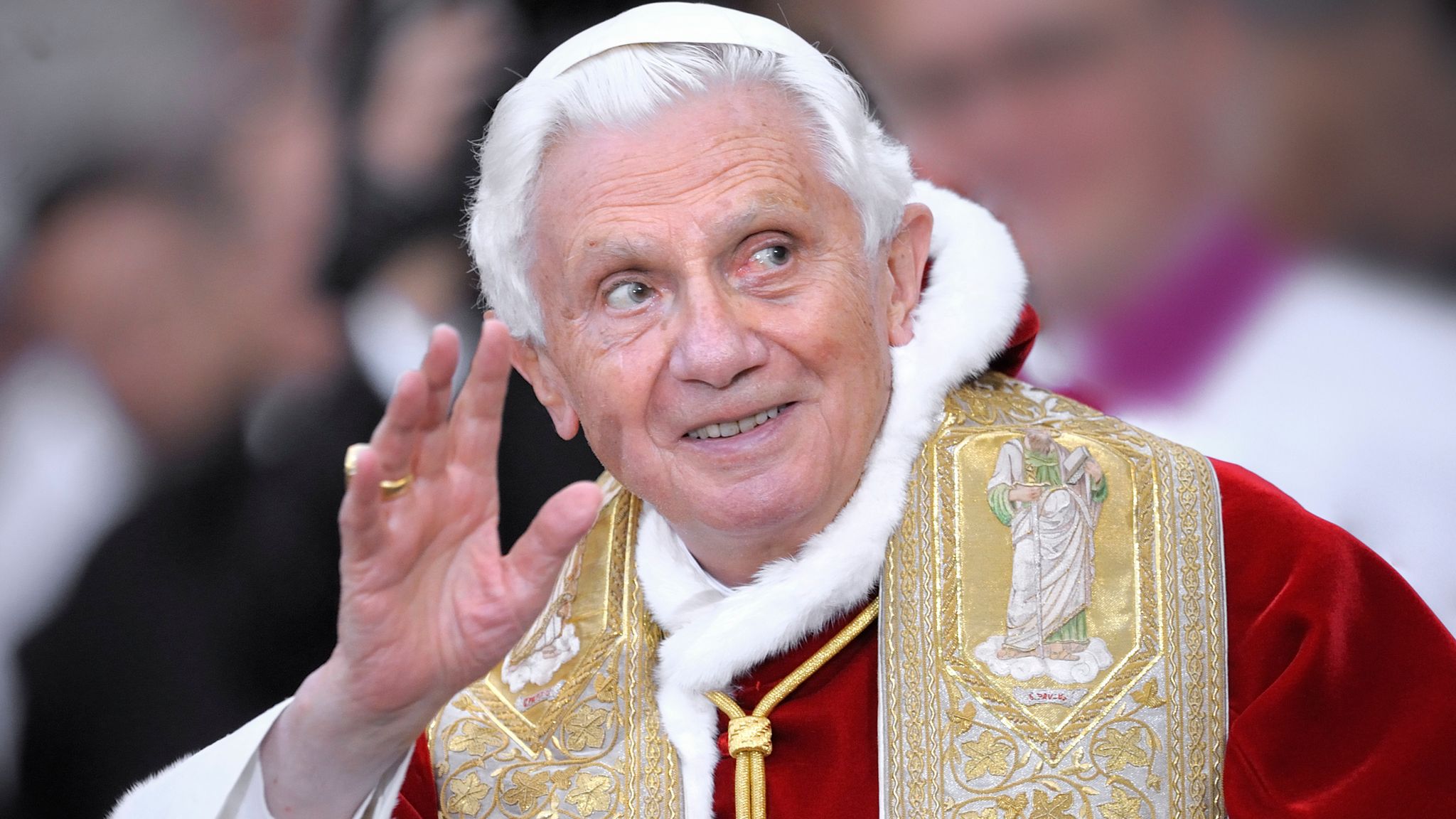
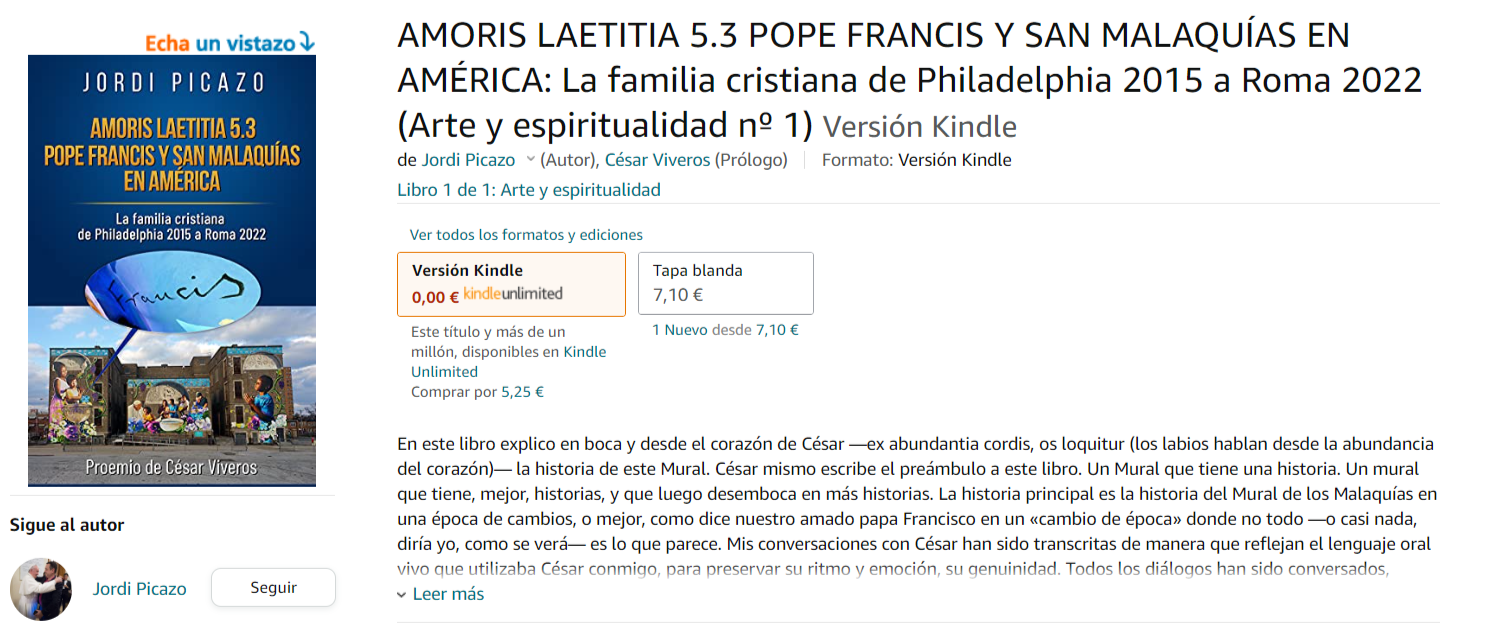
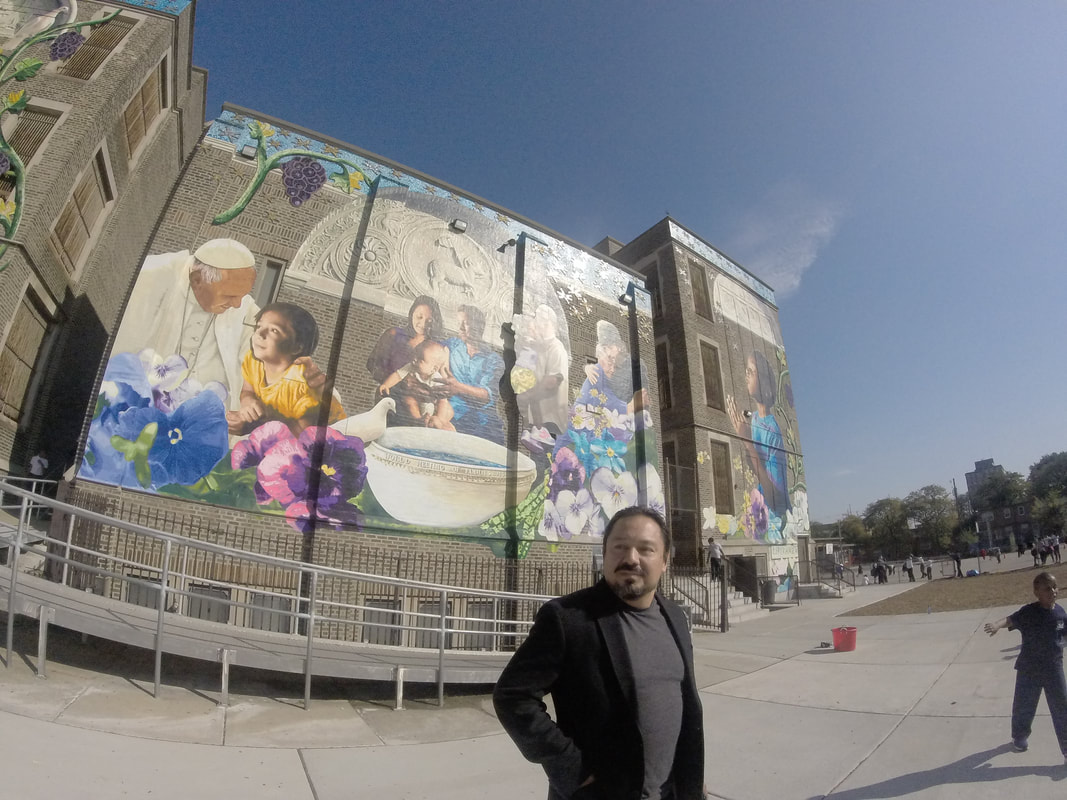
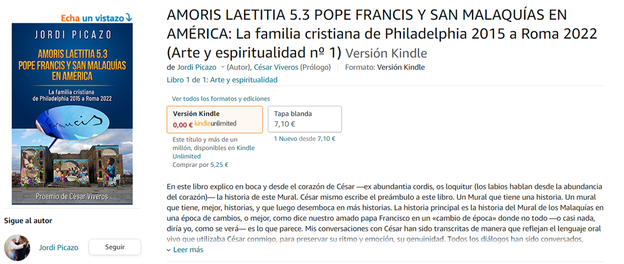
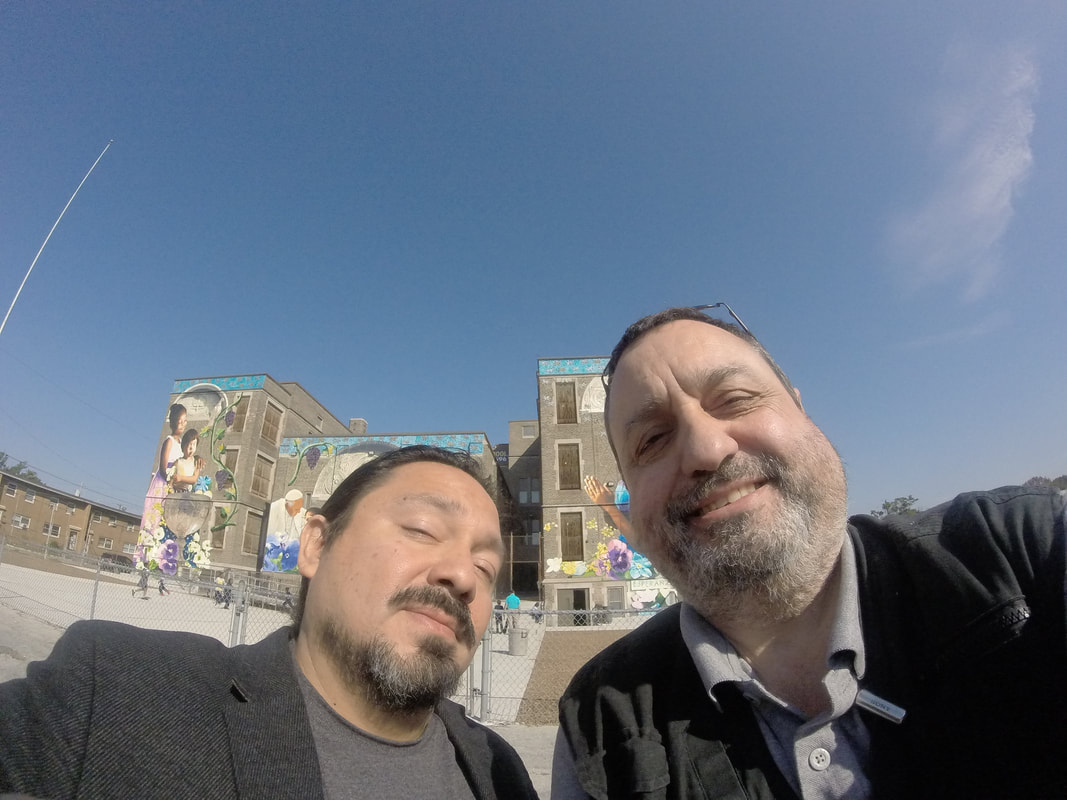
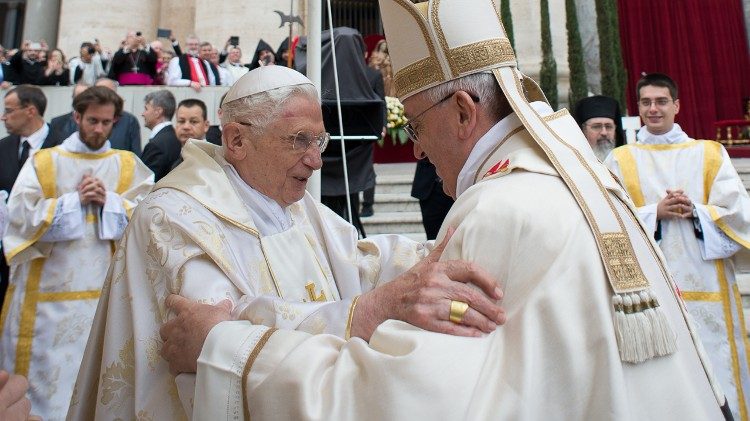
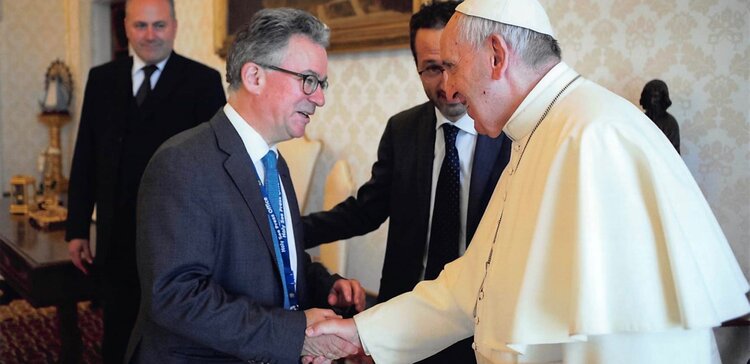
 Canal RSS
Canal RSS
